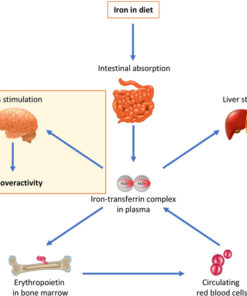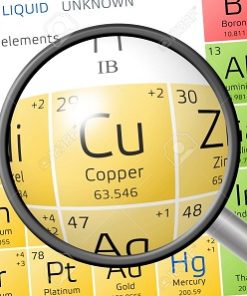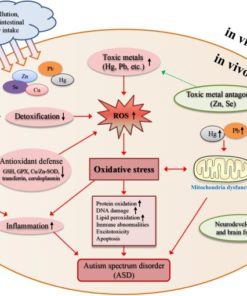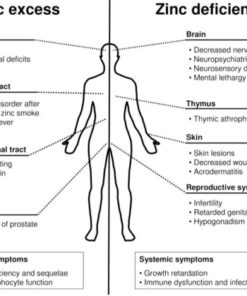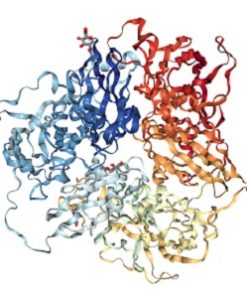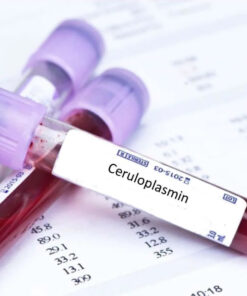
Copper Toxicity; Science, Symptoms, Therapy
The Five Biotypes of Depression: Copper Overload
William Walsh, PhD, a pioneering researcher and clinician in the field of nutrient-based psychiatry, has identified Copper Overload as one of the "Five Biotypes of Depression." Dr. Walsh's protocol utilizes advanced laboratory testing and nutritional therapy to address underlying imbalances in brain chemistry that contribute to depression and other mood disorders. Copper overload, which is characterized by elevated levels of copper and reduced ceruloplasmin, can lead to a host of physical and psychological symptoms, including anxiety, depression, panic disorders, paranoia, insomnia, and postpartum depression. In this article, we will explore the connection between elevated copper and anxiety, the symptoms of copper toxicity, and effective treatment strategies utilizing zinc, selenium, and other key nutrients. We will also discuss the Walsh approach and how it can help identify and address Copper Overload.
Copper and Mood Disorders
Copper is an essential mineral that is required by the body in small amounts for various physiological functions. It is an important component of many enzymes and proteins that are involved in energy metabolism, neurotransmitter synthesis, and connective tissue formation. However, excessive copper accumulation in the body can lead to copper toxicity, which can manifest as a range of physical and psychiatric symptoms. Excess copper in the body can be a major contributor to a variety of mood disorders, including anxiety and depression. Research has shown that unbound copper is a cofactor in the conversion of dopamine to norepinephrine. When unbound copper levels are high, it can increase the conversion rate, leading to a dopamine deficiency and an excess of norepinephrine, which can cause anxiety and other mood disorders.
What Causes Copper Toxicity?
Copper toxicity can occur due to various reasons, including genetic mutations that affect copper metabolism, chronic exposure to copper through diet, water, or occupational hazards, and certain medical conditions that impair the body's ability to excrete excess copper. Individuals who consume large amounts of copper supplements, multivitamins, or antacids that contain copper can also develop copper toxicity.
Symptoms of Copper Overload
Copper toxicity can affect multiple organ systems and cause a wide range of physical and psychiatric symptoms. Some of the physical symptoms include fatigue, headaches, joint pain, muscle weakness, tremors, and gastrointestinal disturbances. Psychiatric symptoms of copper toxicity can manifest in a variety of ways, including fatigue, brain fog, irritability, panic disorders, insomnia, and post-partum depression. In some cases, people with copper overload may also experience neurological symptoms such as tremors or seizures.
Testing for Copper Toxicity
A detailed medical history and physical examination can help identify the underlying cause of copper toxicity. Blood tests can measure copper levels and other related markers such as ceruloplasmin, a protein that binds and transports copper in the blood. The Walsh Approach is a diagnostic tool used by trained physicians to determine whether a person has copper overload. By comparing the ratios of plasma zinc, serum copper, and ceruloplasmin, doctors can identify copper toxicity and develop a customized treatment plan. The approach also takes into account subjective symptoms such as anxiety and other characteristics of elevated free (unbound) copper.
Treating Copper Toxicity
The treatment of copper toxicity depends on the underlying cause and the severity of symptoms. In cases of acute copper toxicity, immediate medical intervention may be necessary to remove excess copper from the body through chelation therapy. Chelation therapy involves the use of drugs that bind to excess copper and facilitate its excretion through urine. In cases of chronic copper toxicity, the primary focus of treatment is to reduce copper intake and enhance the body's ability to eliminate excess copper through dietary changes, supplements, and lifestyle modifications. Zinc supplements can help expel excess copper from the tissues and increase ceruloplasmin levels. Selenium is also effective in promoting ceruloplasmin production. Antioxidants like vitamins A, C, and E, as well as alpha-lipoic acid, can help reduce oxidative stress caused by free copper ions in the brain. These treatments can help alleviate symptoms associated with copper toxicity and improve overall well-being.
Conclusion
Copper overload is a significant contributor to mood disorders, and identifying and treating it is crucial for improved mental health. The Walsh Approach is a valuable tool for physicians to diagnose copper overload, and treatment utilizing zinc, selenium, and antioxidants can help alleviate symptoms associated with copper toxicity. If you're experiencing symptoms of anxiety or other mood disorders, it's worth considering copper overload as a possible cause and speaking with a qualified physician trained in the Walsh Approach to develop an appropriate treatment plan.
Learn More about Copper Overload
Other Single Item Tests
All Cognoscopy Labs
All Cognoscopy Labs
All Cognoscopy Labs
Walsh Approach Test Panels

